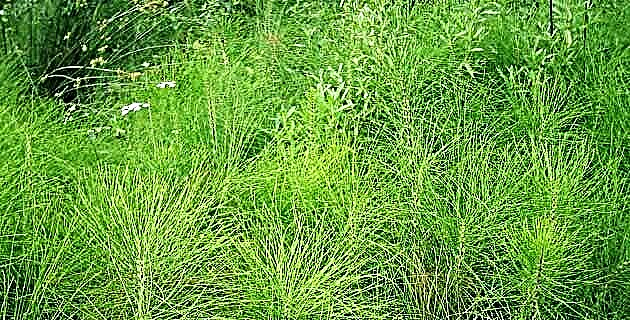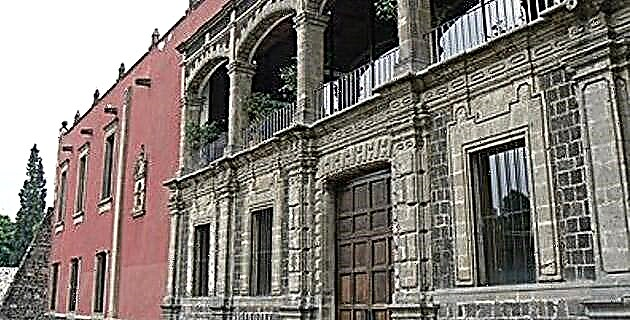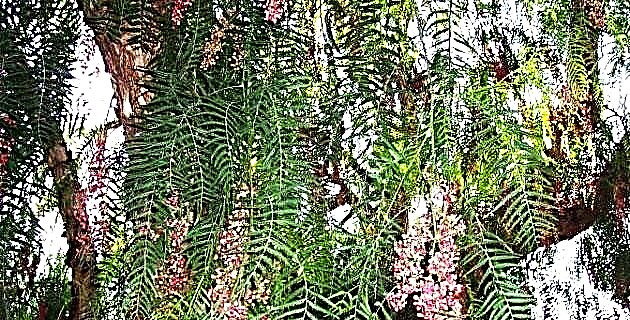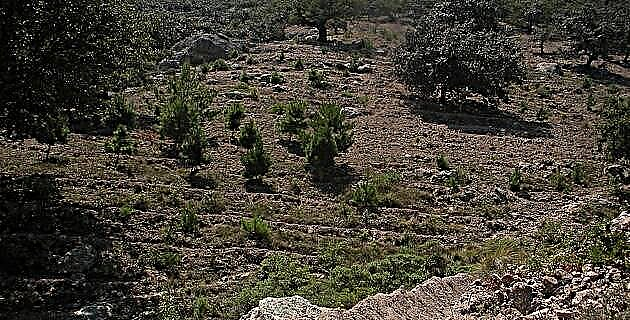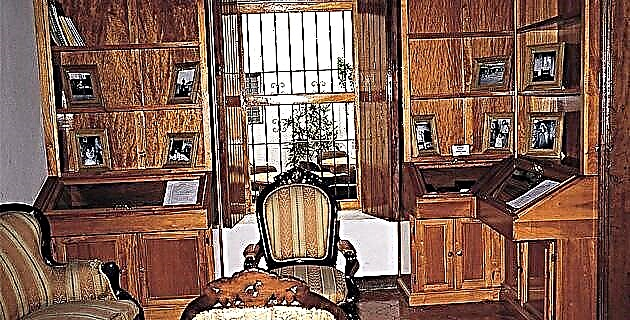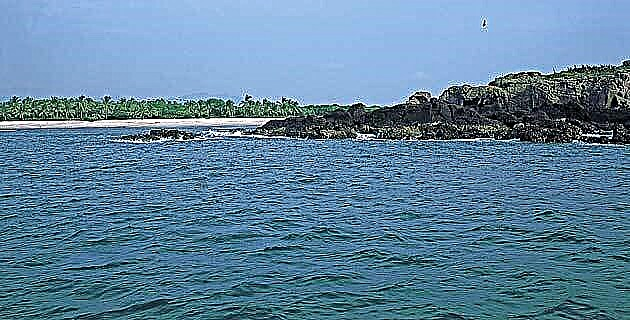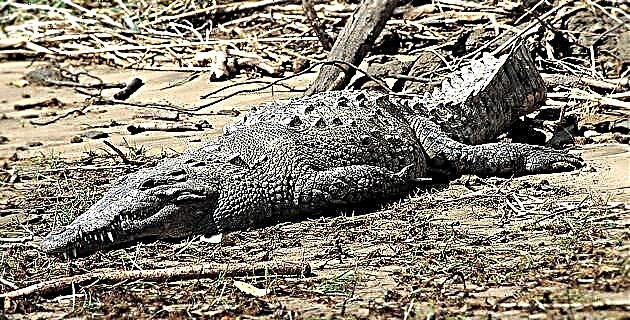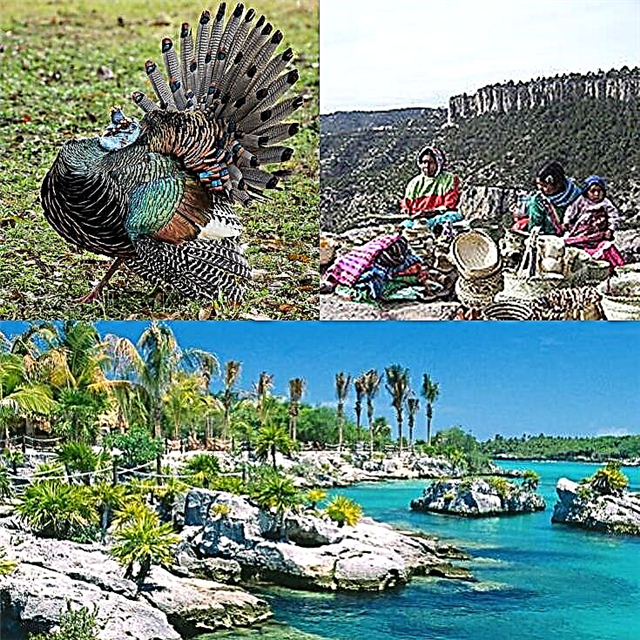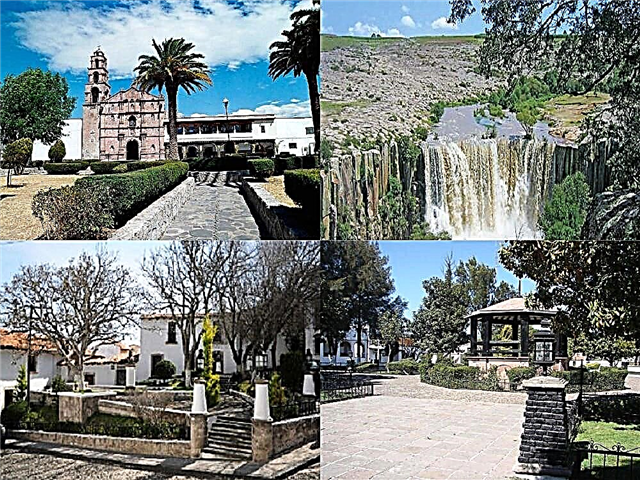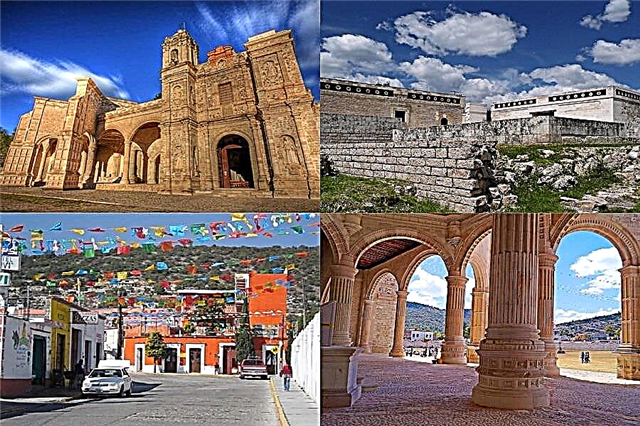This Magical Town of Oaxaca has an architecture of great artistic and historical interest and with beautiful traditions that we invite you to know with this complete guide.
1. Where is the town located?
San Pedro and San Pablo Teposcolula is the head of the municipality of the same name located in the Mixteca Oaxaqueña, in the northwestern sector of the state. It limits territorially with the Oaxacan municipalities of San Andrés Laguna, San Pedro Yucunama, San Juan Teposcolula, Santa María Chilapa de Díaz, Santa María Dauyaco, Santiago Nejopilla, San Bartolo Soyaltepec, San Pedro Mártir Yucusaco, San Sebastián Nicananduta and Santiago Yolomecatl. The city of Oaxaca is located 122 km southeast of the Magic Town.
2. How did San Pedro and San Pablo Teposcolula come about?
The ancient Mixtecs called the place "Teposcolollan", which means "next to the twist of copper", due to the exploitation of this metal during pre-Hispanic times. In Nahua the name is "Tepuscutlan", a term that comes from the union of the voices "tepuztli (iron)", "colhua (crooked)" and "tlan (place)", which would come to be "place of twisted iron »The Dominicans arrived in the 16th century, erecting splendid religious buildings that today constitute the main tourist heritage. In 1986 the town was declared a Zone of Historical Monuments and in 2015 it was elevated to the category of Magic Town to promote the tourist use of its magnificent architecture and traditions.
3. What type of climate does San Pedro and San Pablo Teposcolula have?
Sheltered at its altitude of 2,169 meters above sea level, the Magic Town has a pleasant climate, cool and semi-dry, with an average annual temperature of 16.1 ° C and little noticeable seasonal changes. The coldest month is December, when the thermometer reads slightly below 14 ° C; in April and May, which are the warmest months, it rises to 18 ° C and then begins to drop slightly, reaching 16 ° C in autumn. The extreme cold points are around 4 ° C, while the maximum heats never exceed 28 ° C. In San Pedro and San Pablo Teposcolula it rains 730 mm a year, with a rainy season that runs from May to September. Between November and March the rain is strange.
4. What are the most outstanding attractions?

The main attraction of Teposcolula is the Conventual Complex of San Pedro and San Pablo, erected by the Dominicans in the mid-16th century and whose temple houses the Lord of the Stained Glass windows. Other architectural attractions are the Casa de la Cacica and some squares, mansions and spaces in the historic center. Among the most beautiful traditions of San Pedro and San Pablo Teposcolula we must mention the Dance of the Mascaritas and its religious festivals, mainly that of the Lord of the Stained Glass. The delicious Oaxacan cuisine completes the wonderful set of attractions in Teposcolula.
5. What is the Conventual Complex of San Pedro y San Pablo like?
The Spanish Dominican friars were enchanted by the abundance of water and fertile lands in Oaxaca and settled in the territory in 1541, starting shortly after the Conventual Complex of San Pedro and San Pablo, which has survived to this day extraordinarily well preserved. The architectural grouping is made up of the conventual spaces, the main church and the open chapel. The open chapel is unique in America for the enormous proportions of the building and the atrium, as well as for its conception for outdoor rites, representing a meeting point between the Christian church and the pre-Hispanic indigenous temples.
6. What is of interest in the other buildings in the complex?
In the convent church of superb interior beauty a beautiful image of Christ called the Lord of the Stained Glass is venerated, also standing out 8 altarpieces of enormous artistic merit and some liturgical objects of great cultural and historical value. On both sides of the central nave of the temple there are pedestals and beautiful niches with sculptures of saints, and another piece of great interest is the Baroque organ, which was the subject of a complete restoration. In the former convent there are some oil paintings dedicated to Santo Domingo de Guzmán, works from the 16th century by the European masters living in Mexico, Andrés de la Concha and Simón Pereyns. The arrival to the town of the image of the Lord of the Stained Glass is the subject of a curious legend.
7. What is the legend about the Lord of the Stained Glass?
Legend has it that on one occasion two muleteers came to town with two images, one of the Virgin of the Assumption and the other of a Christ. The images were intended for other towns and the muleteers only stopped in Teposcolula to rest for a while, and when they were going to resume their march, the Christ fell. They said that when they tried to lift it, it had become so heavy that they gave up and decided to spend the night in town. The next morning they were greeted with the surprise that the Christ had been covered in a layer of ice overnight, giving it a glassy appearance. The prodigious events were interpreted in the town as the desire of Christ that his image remain in Teposcolula.
8. What is the interest of the Casa de la Cacica?
It is a majestic construction in which the European architectural style brought by the Spanish merges with that developed by the natives in pre-Hispanic Mexico. It was erected in the 1560s and its foundations are made of blocks of pink marble, an extraordinarily hard local material, glued with a mortar made of sand, lime, and nopal slime. The floors are of the same material and are inked with cochineal grana. In the upper friezes there is a beautiful combination of pink and white quarry, with rectangles framed by red stone in which white circular ornaments stand out on black stone backgrounds. These decorative elements are shaped like inverted mushrooms and are called chalchihuites.
9. What other attractions are there in the historic center?
Another attractive building in the historic center of San Pedro and San Pablo Teposcolula is the Municipal Palace, a white construction with red trim and ornamental elements, which stands out for its wide portal with semicircular arches and the clock located in the second body of the tower. In the first body there is a national shield. During the colony, the town had a complex aqueduct and sewerage system, of which the remains are preserved, with strategically located ponds to supply water to the population and intakes on the properties of the more affluent families. Other places of interest in the town are the Municipal Park, the portal of Dolores and the corn stores.
10. How did the Dance of the Mascaritas come about?
The popular Baile de las Mascaritas arose in 1877 in Mixteca to ridicule the Franco-Austrian army during the celebrations of the first anniversary of the victory of Porfirio Díaz's forces in the Battle of Nochixtlán, defeating invaders who believed they were invincible. The men went out into the streets euphoric, dancing with each other in the French way, in women's costumes, to the music of violins and psalteries. The dance became a tradition throughout Oaxaca, evolving in showiness with magnificent costumes and masks, and the celebration of August 6 in San Pedro and San Pablo is very colorful and joyous.
11. What are the main festivals in town?
The main festival of Teposcolula is the one held in honor of the Lord of the Stained Glass, venerated image of Christ that summons a large number of pilgrims from the Mixteca municipalities to the people. The fair has its maximum day on the first Friday of Lent and apart from the religious acts, there are folkloric shows, such as jaripeos; craft and gastronomic fairs, fireworks and many other attractions. Saint Peter and Saint Paul dispute the Lord of the Stained Glass for the patronage of the people; the feast of these two saints is on July 29 and is similar in color and animation to that of Christ.
12. What is the local crafts and culinary arts like?
The main pieces that you can buy as souvenirs in the Magic Town are hand embroidery and palm items; They also offer handmade crystallized fruits and vegetables. You can get these memories of your visit to Teposcolula at the Municipal Market. In San Pedro and San Pablo Teposcolula are good eaters of stuffed chiles, black mole with turkeys, thick pozole with herbs santa and mole colorado, accompanied with tamales wrapped in totomoxtle leaves. Chilacayote water is a common drink, but if you want something stronger, they have pulque cured with brandy.
13. Where can I stay and eat?
The town has a handful of simple accommodations without great pretensions, but with a careful and personalized attention; among these are Hotel Juvi, Hotel Plaza Jardín and some guest houses. In the nearby city of Oaxaca the hotel offer is much broader. Something similar happens with restaurants; There are some simple and informal places to eat at very convenient prices, such as Temita Restaurant, El Colibrí Restaurant and Los Dos Corazones Park.
Did you like our architectural and festive tour of San Pedro and San Pablo Teposcolula? We hope that you will soon be able to visit the beautiful Oaxacan Magic Town and tell us about your experiences in the Mixteca.
If you want to know the complete guide to magical towns click here.

